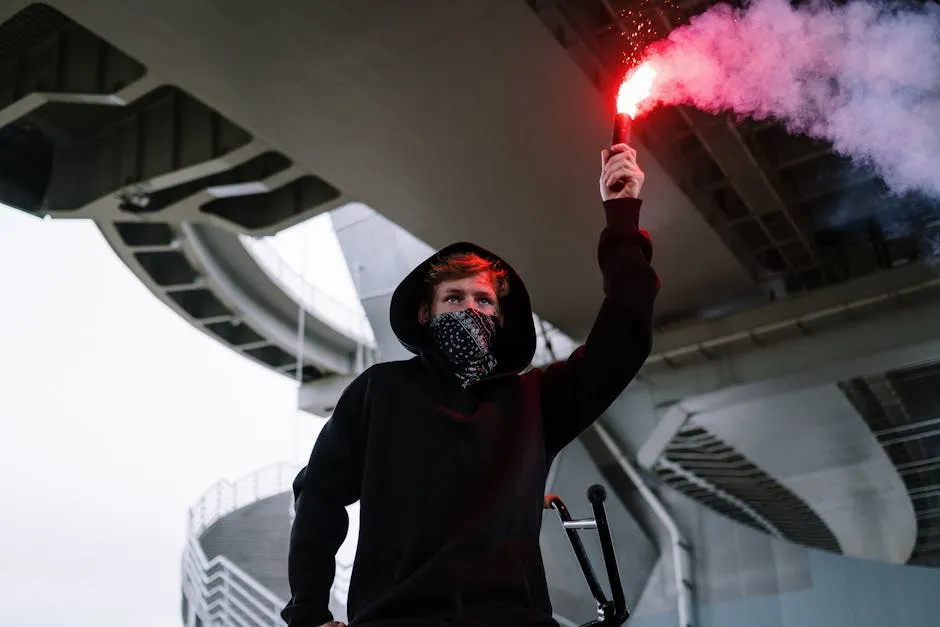Introduction
Fireworks are a dazzling part of American culture, especially during the Fourth of July. They light up the night sky and fill our hearts with festive joy. However, this beauty comes with a dark side. Fireworks can cause severe injuries, and it’s crucial to understand the statistics surrounding them.
Understanding firework injury statistics is vital for several reasons. First, it helps us recognize the potential dangers associated with fireworks. Second, it allows us to make informed decisions about our celebrations. Lastly, knowing the numbers provides insights into trends and demographics, which can guide safety measures.
The U.S. Consumer Product Safety Commission (CPSC) plays a pivotal role in tracking firework-related injuries. They gather and analyze data to help raise awareness about safety issues. Their reports serve as a reminder that safety should always be our priority during celebrations.
This article aims to analyze firework injury statistics from 2023. We’ll explore trends, demographics, types of injuries, and safety recommendations. By the end, you’ll have a clearer picture of the risks involved and how to enjoy fireworks safely.

The Current Landscape of Firework Injuries
Overview of Injury Statistics
In 2023, approximately 9,700 firework-related injuries were treated in emergency rooms across the United States. This startling figure highlights the significant risks associated with fireworks. Among these injuries, there were eight reported fatalities, with five linked to misuse and two due to device malfunctions. Understanding these numbers sheds light on the necessity for caution and awareness.
To ensure safety while handling fireworks, consider investing in a Firework Safety Kit. This kit is essential for any celebration, ensuring you have the right tools and knowledge to enjoy fireworks without the associated risks.
Historical Context
When we look back at the last decade, firework injuries have shown an interesting trend. The peak occurred in 2020, coinciding with the pandemic when many public displays were canceled. Since then, the numbers have fluctuated. In comparison, the 2023 statistics suggest a decrease, but the risk remains. Awareness and precaution are essential to keep these numbers from rising again.
Timing of Injuries
Timing plays a crucial role in firework injuries. A staggering two-thirds of incidents occur around the Fourth of July. The CPSC’s analysis shows that injuries peaked in the weeks leading up to and following this holiday. This trend emphasizes the need for heightened safety measures during festive celebrations.
Fireworks may seem harmless in the excitement of the moment, but they can lead to serious injuries. By staying informed and alert, we can enjoy the beauty of fireworks without jeopardizing our safety or the safety of others.

Demographics of Firework Injuries
Age Groups Affected
Firework injuries often target specific age groups, revealing alarming trends. In 2023, teenagers aged 15-19 exhibited the highest rates of injuries, followed closely by children aged 5-9. According to the U.S. Consumer Product Safety Commission (CPSC), these two groups accounted for a significant portion of the 9,700 firework-related injuries treated in emergency departments.
Why are these age groups particularly vulnerable? Teenagers often seek thrill and excitement, leading them to handle fireworks without proper caution. The allure of sparklers and firecrackers can be irresistible. They may misjudge their safety or attempt stunts, resulting in injuries. With sparklers burning at about 2,000 degrees Fahrenheit, it’s no wonder that accidents happen.
Children, on the other hand, are often unwitting victims. A lack of understanding about the dangers of fireworks makes them susceptible. They might be nearby when older siblings or adults use fireworks, putting them at risk. Their curious nature can also lead to dangerous situations, as they may want to touch or play with fireworks, unaware of the potential harm.
This demographic data highlights a pressing need for education. Parents and guardians must take a proactive approach in teaching safety. It’s essential to supervise children and ensure that teenagers understand the risks involved in firework use. You can also consider introducing them to a Kids’ Educational Book on Firework Safety to help them grasp the importance of being cautious.

Gender Distribution
The gender disparity in firework injuries is striking. Males accounted for a whopping 67% of firework injuries in 2023, while females made up just 33%. This trend raises questions about societal influences and behavior patterns.
Why are men more likely to suffer from firework-related injuries? For starters, societal norms often encourage risk-taking behavior among males. Many men feel pressured to “show off” when handling fireworks, leading to unsafe practices. Whether it’s lighting a firecracker too close to friends or failing to follow safety protocols, the stakes are high when it comes to bravado.
Additionally, males are more likely to engage in fireworks use during celebrations. They often take the lead in planning and executing firework displays. This tendency not only increases their exposure to potential hazards, but it also contributes to the higher injury statistics.
Raising awareness about these disparities is vital. Firework safety campaigns should target young males, emphasizing the importance of responsibility and caution. Engaging them in discussions about safety can help shift these statistics in the right direction. To enhance safety, consider using Protective Eyewear when handling fireworks to prevent eye injuries.

Geographic Trends
Geographic trends reveal fascinating insights into firework injuries. Certain states experience higher rates of injuries, often correlating with firework legislation and cultural practices. For instance, states where fireworks are prohibited tend to have lower injury rates.
In contrast, states with relaxed regulations on firework sales often report a spike in injuries. States like Texas and California, where personal use of fireworks is common, experience a disproportionate number of incidents. These regions have reported substantial injuries during holidays, particularly around the Fourth of July.
Moreover, rural areas may see higher incidents due to less stringent enforcement of safety regulations. In these communities, there’s often a culture of using fireworks without proper oversight. It’s essential to recognize that geographic factors play a significant role in firework-related injuries.
To address these trends, local authorities must implement stricter regulations and safety campaigns. Communities should work together to educate residents about safe firework practices, regardless of the legal stance on firework usage. By fostering a culture of safety, we can hopefully reduce the number of injuries related to fireworks in the future. And while you’re at it, consider adding an Fireworks Safety Manual to your collection for comprehensive guidelines.

Types of Firework Injuries
Common Types of Injuries
Fireworks can lead to various injuries, with burns being the most prevalent. In 2023, burn injuries accounted for 42% of the total firework-related incidents. These burns can be severe, often affecting hands, fingers, and faces. The CPSC data shows that hands and fingers were involved in 35% of the injuries, while injuries to the head, face, and ears represented 22%.
The nature of these injuries highlights a significant concern. When individuals handle fireworks, they often underestimate the danger. The excitement of lighting a firework can lead to hasty actions, resulting in injury. A moment’s distraction can lead to a severe burn or laceration, leaving lasting scars.
Eye injuries are another major concern, accounting for 19% of reported incidents. Fireworks can explode unexpectedly, sending debris flying toward onlookers. The potential for blindness or severe eye damage is a real risk that should not be ignored.
Understanding the types of injuries can help inform safety measures. Educating the public about the risks associated with specific body parts is crucial. This information can guide individuals to take appropriate precautions, such as wearing protective eyewear and avoiding direct exposure to fireworks.

Specific Fireworks Involved
Different types of fireworks are associated with various injuries. Firecrackers and sparklers are frequently involved in accidents. Firecrackers, responsible for around 800 injuries, can explode unexpectedly, causing severe damage. Sparklers, while often viewed as harmless, burn at incredibly high temperatures and can lead to significant injuries, particularly for children.
Moreover, the misuse of fireworks is a common cause of injuries. Many individuals attempt to relight malfunctioning fireworks or handle them without proper knowledge. This behavior underscores the importance of education on safe practices. To enhance your understanding, consider the Fireworks Display Mortars that can provide a safer viewing experience when handled by professionals.
By raising awareness about specific fireworks and their associated risks, we can empower individuals to make safer choices. Encouraging people to leave firework displays to the professionals can further reduce the number of injuries each year.

Severity of Injuries
The severity of firework injuries can vary significantly. While many injuries are treatable in emergency rooms, some require hospitalization. In 2023, approximately 18% of victims were hospitalized due to the severity of their injuries.
Long-term effects from firework injuries can also occur. Some individuals suffer permanent scarring or loss of function in affected limbs. The emotional toll of such injuries can be significant, impacting quality of life.
Highlighting the severity and potential long-term consequences of firework injuries is crucial for fostering a culture of safety. By sharing stories of those affected, we can create a stronger awareness of the risks involved. For those interested in capturing the beauty of fireworks safely, consider investing in a Fireworks Photography Book to learn about capturing those moments without the risks.

Awareness Campaigns
Organizations like Prevent Blindness play a crucial role in promoting firework safety. They have designated June 28 to July 4 as Fireworks Safety Awareness Week. This initiative aims to educate the public about the dangers associated with fireworks. They provide resources, including fact sheets and graphics, to help spread the message.
Statistics show that these campaigns have a positive impact. In 2023, nearly 9,700 firework-related injuries were reported. However, awareness initiatives have contributed to a slight decrease in injuries compared to previous years. Reports indicate that injuries from fireworks have been trending down since their peak in 2020. This progress demonstrates the effectiveness of ongoing safety campaigns.
To further enhance your safety knowledge, consider reading an Emergency Preparedness Book that provides essential tips to keep your celebrations safe.

Community Involvement
Community engagement plays a significant role in promoting safe fireworks use. Local events often encourage families to attend professional displays rather than using personal fireworks. This shift not only enhances safety but also fosters a sense of community.
Moreover, various local initiatives aim to reduce firework injuries. Some communities implement stricter regulations on firework sales and usage. Others organize educational workshops on firework safety, emphasizing responsible behavior. For instance, some towns have even started offering free safety kits during the Fourth of July celebrations. Investing in a First Aid Kit can also be a smart move for any household, ensuring you’re prepared for any emergency.
These collective efforts highlight the importance of community involvement. By working together, communities can create safer environments and reduce the number of firework-related injuries.

Conclusion
Firework injuries in 2023 paint a sobering picture. With approximately 9,700 injuries reported, it’s clear that safety must be a priority. The eight tragic fatalities remind us that fireworks, while festive, pose significant risks. Understanding these statistics is the first step in fostering a culture of safety.
Key findings reveal that young people, particularly teenagers aged 15-19, are the most affected demographic. This highlights the need for targeted education and supervision during celebrations. Awareness campaigns from organizations like Prevent Blindness have shown effectiveness in reducing injuries. Yet, more work is necessary to ensure safety during these exuberant celebrations.
Community involvement also plays a vital role. Local regulations and events that promote professional displays can drastically reduce the chances of accidents. By encouraging responsible behavior and providing resources, communities can contribute to a safer environment. And for those summer nights, consider hosting a gathering with a BBQ Grill Set or setting up an outdoor picnic with a Picnic Set.
As we celebrate, let’s remember the importance of safety and awareness. Ensuring that fireworks are used responsibly can prevent many injuries. Everyone can contribute to this effort. Share safety tips with friends and family, and promote awareness in your community. Together, we can enjoy the beauty of fireworks while keeping everyone safe. Let’s make safety a tradition that shines as brightly as the fireworks themselves!

FAQs
What are the most common injuries caused by fireworks?
Fireworks can turn a joyful celebration into a trip to the emergency room. The most common injuries include burns, lacerations, and eye injuries. Burns account for about 42% of all firework injuries. They often affect hands, fingers, and faces. Sparklers, which burn at around 2,000 degrees Fahrenheit, can cause severe burns, especially in children. Lacerations follow closely behind, making up a significant portion of the injuries. They typically happen when fireworks explode unexpectedly or are mishandled. Eye injuries are another major concern, with nearly 19% of firework-related injuries involving the eyes. These injuries can lead to serious consequences, including permanent vision loss. Overall, understanding these common injuries can help in taking appropriate precautions when celebrating with fireworks.
How can I prevent firework injuries?
Prevention is the name of the game when it comes to firework safety. Here are some practical tips: 1. **Check Local Laws**: Ensure fireworks are legal in your area. Some places have strict regulations. 2. **Use Legal Fireworks**: Purchase only fireworks labeled for consumer use from reputable retailers. 3. **Supervision is Key**: Always supervise children around fireworks. Never allow them to handle or ignite fireworks. 4. **Light One at a Time**: This keeps things manageable and reduces the risk of accidents. 5. **Stay Sober**: Avoid using fireworks while under the influence of alcohol or drugs. Impaired judgment can lead to dangerous situations. 6. **Have Water Ready**: Keep a bucket of water or a hose nearby for soaking used fireworks. 7. **Follow Instructions**: Always read and follow the instructions on the fireworks packaging. By following these safety tips, you can minimize the risk of injuries and enjoy a safer celebration.
What should I do if I or someone else is injured by fireworks?
In case of a firework injury, staying calm and following these steps is crucial: 1. **Assess the Injury**: Quickly evaluate the severity of the injury. If it’s minor, you may be able to treat it at home. 2. **Seek Medical Attention**: For serious injuries, especially burns or eye injuries, seek medical help immediately. Don’t attempt to treat severe injuries on your own. 3. **Follow First Aid Steps**: For minor burns, cool the area with running water for 10-20 minutes. Cover it with a clean, non-stick bandage. 4. **Don’t Remove Debris**: If there are any foreign objects embedded in the wound, do not attempt to remove them. Let medical professionals handle it. 5. **Report the Incident**: If the injury was caused by a malfunctioning firework, report it to local authorities and the CPSC. This helps track safety issues. Taking these steps can ensure that injuries are treated appropriately and prevent further complications.
Are there legal repercussions for using illegal fireworks?
Yes, using illegal fireworks can lead to serious legal consequences. The penalties vary by state and locality but can include hefty fines and even criminal charges. In many areas, fireworks that aren’t approved for consumer use are illegal. If caught using or selling illegal fireworks, you might face fines ranging from hundreds to thousands of dollars. Additionally, if someone is injured due to your use of illegal fireworks, you could be held liable for damages. This includes medical costs, lost wages, and pain and suffering claims. To avoid any legal troubles, always check your local laws regarding firework usage before celebrating.
Where can I find more information on firework safety?
For those looking to stay informed about firework safety, several valuable resources are available: 1. **U.S. Consumer Product Safety Commission (CPSC)**: Their website offers comprehensive information on firework safety, including tips and injury statistics. 2. **Prevent Blindness**: This organization runs awareness campaigns and provides resources about the risks of firework injuries, especially eye injuries. 3. **Local Fire Departments**: Many fire departments offer safety tips and guidelines specific to your area. 4. **National Safety Council**: This organization provides general safety information and resources for various hazards, including fireworks. 5. **Community Events**: Attend local safety workshops or events focusing on firework safety. They often provide practical demonstrations and tips. Staying informed and utilizing these resources can help ensure a safer celebration for everyone involved.
Please let us know what you think about our content by leaving a comment down below!
Thank you for reading till here 🙂
All images from Pexels




